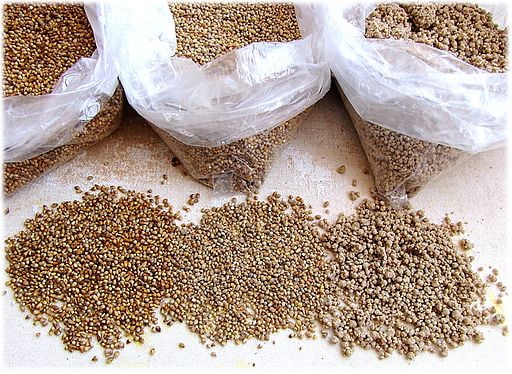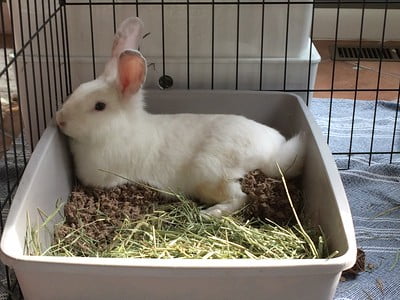Last Updated on March 13, 2023 by Marjon Ramos
Dental problems like overgrown teeth in rabbits are extremely dangerous and can even lead to death if not treated. A rabbit that’s in pain due to a dental problem would refuse to eat or only eat a little.
Rabbits need to constantly eat for their gut to function properly. A rabbit that’s refusing to eat would eventually develop some kind of digestive problem like GI stasis.
Rabbits’ teeth normally grow 1 cm each month, approximately. That’s why they need to constantly chew on things to grind their teeth.
Now that I’ve given you the gist of the article, read on as I explain in more detail why a rabbit can die from overgrown teeth:
Table of Contents
How can rabbits die from overgrown teeth?
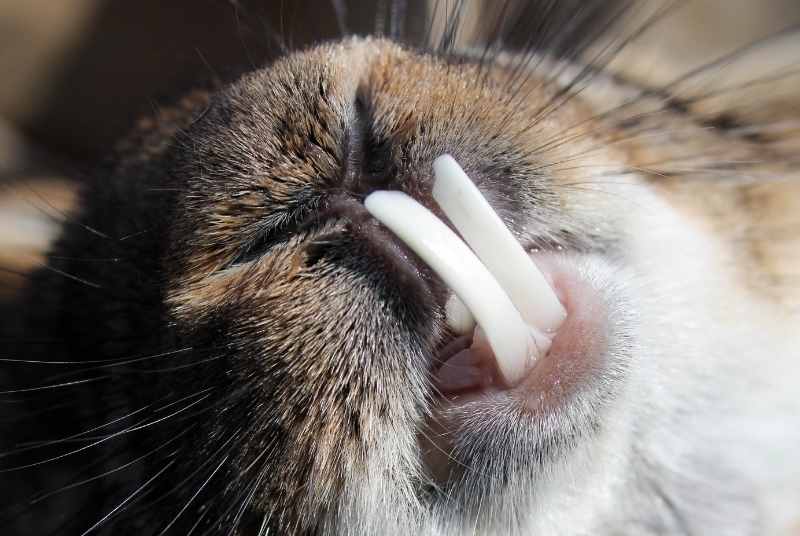
Rabbits can die from overgrown teeth because, most of the time, they cannot eat or will refuse to eat due to pain or inability to chew or swallow.
Overgrown teeth could even grow until it meets your rabbit’s lower jaw, which can lead to abscesses in the mouth. If the abscess is not treated, it can lead to infections that can spread to your rabbit’s jaw, areas of their head, and neck.
Which in turn could lead to sepsis, a life-threatening infection that can kill your rabbit.
How to tell if your rabbit has overgrown teeth?
You can tell that your rabbit has overgrown teeth by looking for symptoms of malocclusion or by manually checking its teeth.
Here are the symptoms that your rabbit might be suffering from malocclusion:
- Weight loss. Rabbits that are suffering from overgrown teeth would likely suffer from weight loss. Rabbits that are in pain would refuse to eat or only eat a little.
- Drooling. Rabbits that are suffering from overgrown teeth would likely find it difficult to completely shut their mouth. This in turn could lead to drooling.
- Stool changes. Rabbits that are suffering from overgrown teeth would likely develop some kind of digestive problem like GI stasis due to the inability to eat enough fiber. Watch out for changes in your rabbit’s stool, both in size and consistency.
- Uneaten cecotropes. Rabbits that have overgrown teeth would likely suffer from uneaten cecotropes because they wouldn’t be able to eat their cecotropes. Watch out for an increased pile of cecotropes on your rabbit’s cage or hutch.
- Abscesses. A facial abscess can also form due to overgrown teeth.
- Eye problems. Your rabbits can also suffer from eye problems like runny eyes due to abscesses and pressure on the tear ducks from elongated roots.
- Wet paws. You might also notice that your rabbit always has wet paws when they’re suffering from overgrown teeth. Rabbits that have overgrown teeth would have difficulty shutting their mouth. Their paws might get wet when they are trying to wipe their mouths.
You can also manually check your rabbit’s teeth if they’re overgrown. Here’s a great video by PDSA on how to check your rabbit’s teeth:
What causes overgrown rabbit teeth?
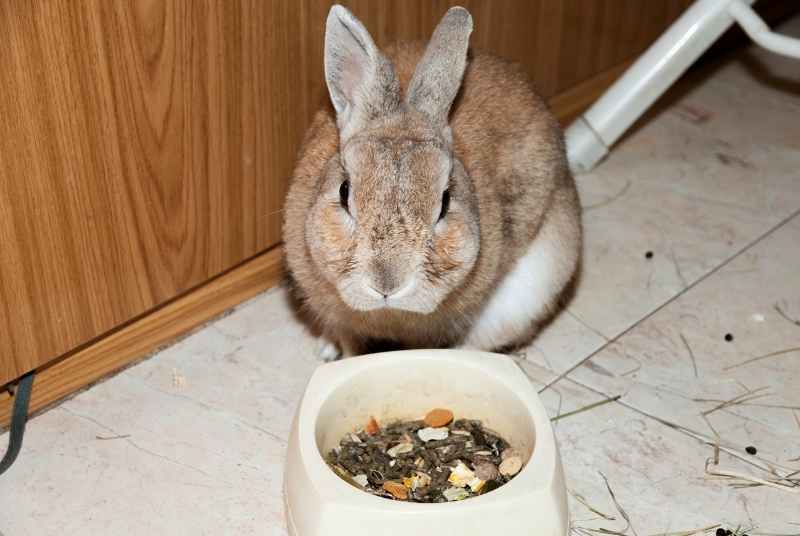
Overgrown teeth in rabbits are often caused by a wrong diet. Wild rabbits will often chew grass and wood all day, which causes proper tooth wear.
Pet rabbits are often fed the wrong diet or a diet that doesn’t wear the teeth down like pellets. Your rabbits need to eat hay in order for them to properly wear their teeth down.
You should also provide some chew toys like twigs to further help your rabbit file down their teeth.
Overgrown teeth can also be genetic. Certain breeds like dwarf rabbits and lop breed rabbits are more prone to overgrown teeth.
Finally, there’s a theory that even though rabbits are getting a lot of calcium in their diet (from hay), they are not able to utilize that calcium due to a lack of exposure to sunlight (vitamin D, which enables the absorption of calcium).
How long can a rabbit survive before dying of overgrown teeth?
The amount of time it takes for a rabbit to die from overgrown teeth would depend on the condition your rabbit would develop from having overgrown teeth.
As an example, if your rabbit developed GI stasis because they were not eating enough fiber (due to pain). They could die in 24 to 48 hours.
How to prevent your rabbit from dying from overgrown teeth?
The best way to prevent your rabbit from dying from overgrown teeth is to take them to a veterinarian as soon as you notice that your rabbit’s teeth are not normal or when they’re showing signs of malocclusion.
Your veterinarian would likely file your rabbit’s teeth or cut it down to the proper size.
Some people would try to fix overgrown teeth themselves by using a nail clipper or pliers and wire cutters to cut the rabbit’s teeth to the proper length.
But I would highly advise you to not do this. You could further damage your rabbit’s teeth by splitting the teeth lengthwise if you do this incorrectly.
When should you bring your rabbit to a veterinarian to prevent it from dying of overgrown teeth?
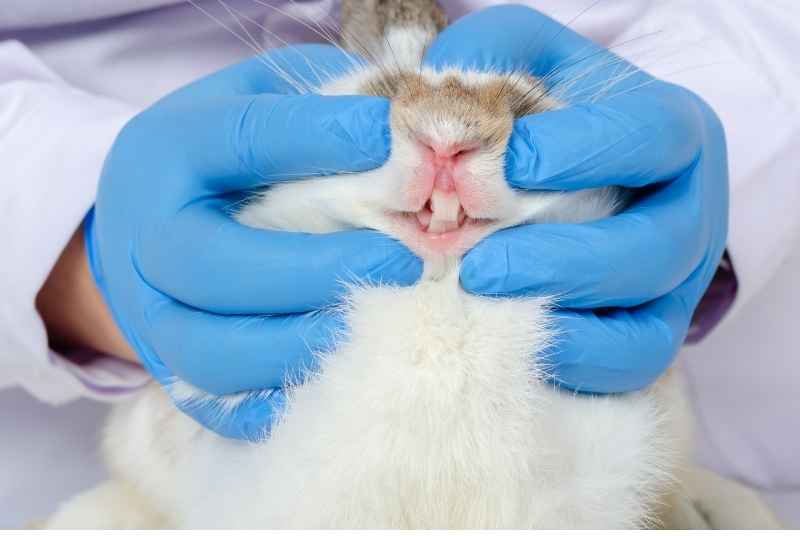
As soon as you notice that your rabbit is exhibiting signs that they’re suffering from overgrown teeth, bring them to a veterinarian. Rabbits are really good at hiding pain because showing weakness in the wild would only lead to death.
Always check your rabbit’s teeth every two weeks to make sure they’re the proper length. Also, a proper diet is crucial in maintaining your rabbit’s dental health.
As I mentioned earlier, rabbits can easily die from overgrown teeth if they develop GI stasis by refusing to eat due to pain from overgrown teeth.
Conclusion
Rabbits can die from overgrown teeth if it’s not treated. Overgrown teeth could lead to more serious health conditions like GI stasis and abscess.
Always bring your rabbit to a veterinarian if you notice that your rabbit’s teeth are not normal or if they’re exhibiting the signs of a dental problem like drooling, weight loss, stool changes, uneaten cecotropes, facial abscess, eye problems, and wet paws.
Cite this article:
Sources
- Lop rabbit
- Dental Disease in Rabbits
- Patry, Karen, et al. The Rabbit-Raising Problem Solver: Your Questions Answered about Housing, Feeding, Behavior, Health Care, Breeding, and Kindling. Storey Publishing, 2014.
Image credit – Uwe Gille, CC BY-SA 3.0 https://creativecommons.org/licenses/by-sa/3.0, via Wikimedia Commons

